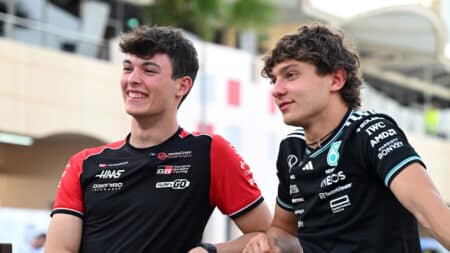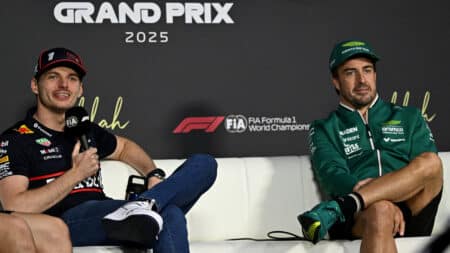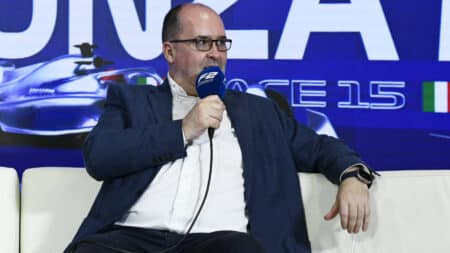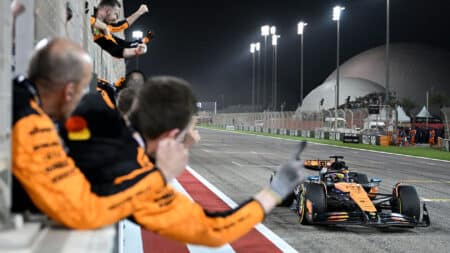And then there were none: Italian drivers in Formula 1.
The home of the most famous team in motor racing and of international karting, plus the lair of the world’s most committed taxi drivers, will, for the first time since the 1973 German Grand Prix, not be represented when the pit lane opens for Qualifying in Melbourne next month.
And Pescara’s Jarno Trulli, a man blessed with fluid speed but perhaps lacking the necessary steely core, might be the last for a while having suffered ‘rouble trouble’: he’s been dropped by Caterham F1 in favour of Vitaly Petrov.

Philosophical and phlegmatic, as a 37-year-old veteran of 252 Grand Prix starts ought to be, he was impassioned more by his nation’s parlous state of F1 affairs: “In Italy there’s no system that helps drivers emerge at a high level, so it’s normal that it ends up in a situation like this. The problem is not mine: others must take responsibility.”
Ferrari’s recently formed Driver Academy is worthy but a little too late – the Scuderia’s dominant Schumacher Era made it lazy about such matters – and nor is it dedicated to Italians: Mexican Sergio Pérez, already with Sauber, and France’s Jules Bianchi, reserve driver for Force India, are its most likely graduates. The UK-centric McLaren Autosport BRDC Award in contrast has been running since 1989, during which time it has boosted the careers of, among others, David Coulthard, Jenson Button and Paul di Resta.

Italian drivers have long suffered a fractious relationship with F1: 15 – the second-most from an individual country – share 43 GP wins between them. To use cricketing terminology, only Alberto Ascari, with 13, was able to build on his start. And even he was bedevilled by omen and superstition; he died on the late-May day in 1955 when a suspicious number of them aligned and he, unusually, paid them no heed.
The next Italian in the win column, some way down it, is Riccardo Patrese with six (from 256 starts). ‘Nino’ Farina and Michele Alboreto have five apiece, Giancarlo Fisichella three, Elio de Angelis two – and thereafter the disappointing total unravels in a string of singles: Luigi Fagioli, Piero Taruffi, Luigi Musso (shared with Juan Fangio), Giancarlo Baghetti, Lorenzo Bandini, ‘Lulu’ Scarfiotti, Vittorio Brambilla, Alessandro Nannini and Trulli.
Compare this with British F1 drivers: 219 wins shared by 19. That’s 11.5 each to Italy’s 2.9. Nigel Mansell (31 wins), Jackie Stewart (27), Jim Clark (25), Damon Hill (22), Lewis Hamilton (17), Stirling Moss (16), Graham Hill (14), Coulthard (13), Button (12) and James Hunt (10). Only Innes Ireland and Peter Gethin became marooned on one.

Farina and Ascari won three of the first four world championships – since when Italy has drawn a blank while Mike Hawthorn, Graham Hill, Clark, Surtees, Stewart, Hunt, Mansell, Damon Hill, Hamilton and Button have racked up 14 titles between them.
I’m loath to stoop to evoking national stereotypes, but feel free to apply them wherever you see fit.
Before you do, however, it must be conceded that British F1 drivers have undoubtedly benefited from their country’s racing fecundity. Only 19 of those 219 wins were achieved in a Ferrari: Surtees and Eddie Irvine (4), Peter Collins, Hawthorn and Mansell (3) and Tony Brooks (2). A French Matra (Powered by Ford and run by Tyrrell) supplied them with nine wins, Maserati two and Mercedes-Benz one. The vast majority, in other words, were achieved in British-built machinery – and I include John Surtees’ 1967 ‘Hondola’ (Bromley via Slough) and John Watson’s 1976 Penske (Poole). Williams, Lotus, Tyrrell, McLaren, Vanwall, Cooper, BRM, Hesketh, Brawn, Benetton and Stewart Grand Prix are the others.
Italian drivers in contrast have been more reliant on a single source since Maserati imploded after 1957: Ferrari has supplied them with 22 of those 43 wins. That’s 51 per cent – a stat admittedly skewed by Ascari’s fantastic run of success from 1952-’53.
And here’s the rub: Enzo fought shy of employing local talent because of the flak that he copped – from Il Papa down – in the aftermath of the fatal accidents of Eugenio Castellotti (1956), Musso (1958) and Bandini (1967). Alboreto in 1984 was the first Italian to win a GP in a Ferrari since 1966. This combo won twice more in 1985 before fading badly – and no Italian has won a GP in a Ferrari since.
Maranello, with its mist of myth that swirls about it, is a bottleneck. A fair few of the Italian ex-F1 drivers that I have spoken to over the years have alluded to hushed liaisons with Enzo that promised much yet came to naught. Trulli – although he has neither ‘negotiated’ with Enzo nor yarned with me – can, as it turns out, be added to that lengthening what-might-have? Ferrari list.
The pressure of being an Italian in an F1 Ferrari proved too much for several of those who did get to live the ‘dream’: Luca Badoer, Baghetti and, saddest of them all, Ivan Capelli buckled under the weight. And yet the prospect continues to lure. Moths, meet flame. Fisichella, for example, couldn’t resist a final brief fling with Ferrari in 2009, even though it meant giving up his grooved Force India-Mercedes-Benz that would have offered him a genuine chance of victory at Monza.

Why? Because the tifosi care only about Ferrari. Drive one, and you’re ‘Italian’ no matter what is printed in your passport. It’s an open-borders policy that camouflages a narrow-minded viewpoint that is indicative – and partly the cause – of Italian racing drivers’ current predicament as well as many of their long-held frustrations and ultimate underachievement.
Italy has room in its heart only for Scuderia Ferrari. That’s a strength and a weakness – and there’s no avoiding it.








